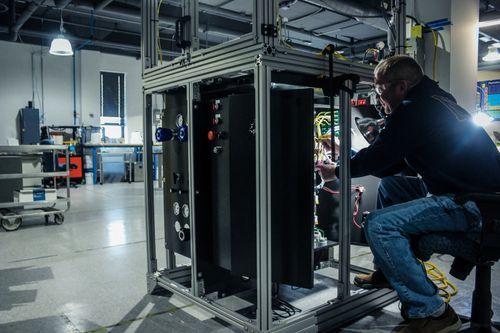The U.S. Department of Energy’s (DOE) Loan Programs Office (LPO) announced today a conditional commitment for a loan guarantee of up to $1.559 billion to Wabash Valley Resources.
The loan guarantee would help finance a commercial-scale waste-to-ammonia production facility using carbon capture and sequestration (CCS) technology in West Terre Haute, Indiana. The project will have the potential to be the world’s first, carbon-negative ammonia production facility, according to a news release.
The project would repurpose an industrial gasifier to utilize petroleum coke while permanently storing carbon dioxide to produce 500,000 metric tons of anhydrous ammonia annually. This project would play a critical role in securing domestic fertilizer supply for the region commonly known as the Corn Belt, contributing to both food security and climate goals. LPO’s conditional commitment of up to $1.559 billion would be part of a total investment of $2.4 billion that Wabash Valley Resources would secure for the project through private investment.
Wabash Valley Resources would be the first domestic producer located in the Corn Belt to produce low-carbon ammonia for local farmers and co-ops in the region. This low-carbon ammonia would be cost-competitive compared to existing ammonia imports, helping to drive down costs for local businesses and consumers. In addition to its environmental benefits, the facility would also support hundreds of high-quality union jobs in West Terre Haute.
Based on a third-party analysis, the Wabash Valley Resources project could create eight indirect permanent jobs for each of the 125 operations jobs created at the facility, resulting in 1,100 total permanent jobs, in addition to at least 500 union construction jobs.
Ammonia-based fertilizer is a crucial element of the U.S. agricultural system, but its production is a significant contributor to climate change. Globally, ammonia manufacturing accounts for 1% to 2% of all CO2 emissions. By producing low-carbon ammonia and permanently sequestering 1.6 million metric tonnes of CO2 annually, Wabash Valley Resources would contribute to the United States’ efforts to reduce its agricultural industry’s emissions.
Petcoke, a feedstock for the facility, is a waste product generated during the oil refining process. The United States is currently the world’s largest exporter of petcoke to low-income countries where it is combusted, causing significant adverse environmental effects. The Wabash Valley Resources project would be the first in the United States to utilize petcoke to produce ammonia and store the associated CO2 emissions via permanent geologic sequestration. Wabash Valley Resources intends to demonstrate a commercially and environmentally viable end-use alternative for petcoke.
Workers at the Wabash Valley Resources facility are expected to be represented by several unions, such as the International Brotherhood of Electrical Workers (IBEW), Boilermakers Local 374, Bricklayers Local 4, Cement Masons Local 692, Plumbers and Steamfitters Local 157, and Operating Engineers Local 841. The project has been approved under the National Maintenance Agreement (NMA), a national collective bargaining agreement overseen by the National Maintenance Agreement Policy Committee.




